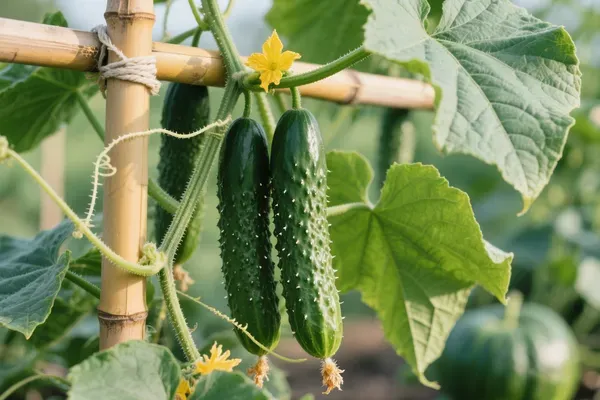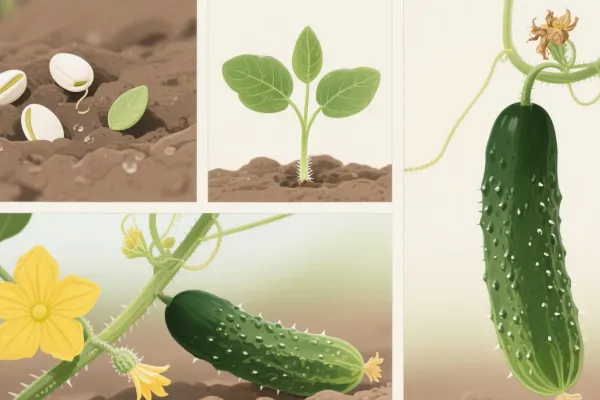Avoid your inquiry is delay response, please enter your WhatsApp/Skype along with the message, so we can contact you at the very first time.
We will reply you within 24 hours. If for urgent case, please add WhatsApp/WeChat:
Warning: Undefined variable $public in /www/wwwroot/lvfertilizer.com/wp-content/themes/hyhadmin/header.php on line 350
Warning: Trying to access array offset on value of type null in /www/wwwroot/lvfertilizer.com/wp-content/themes/hyhadmin/header.php on line 350
,. Or call
Warning: Undefined variable $public in /www/wwwroot/lvfertilizer.com/wp-content/themes/hyhadmin/header.php on line 350
Warning: Trying to access array offset on value of type null in /www/wwwroot/lvfertilizer.com/wp-content/themes/hyhadmin/header.php on line 350
directly.
Cucumber growers need strong vines, healthy leaves, and abundant fruit. Yet, many face weak plants, yellowing, low yields, or poor-quality cucumbers. These problems often come from poor soil nutrition and wrong fertilizer choices. Cucumbers have shallow roots and are heavy feeders. They need a precise balance of nitrogen (N), phosphorus §, and potassium (K) — together called NPK . Using the wrong NPK fertilizer can burn roots or lead to “all vine, no fruit” .
Choosing the right NPK ratio is hard. With so many products — compound fertilizers (NPK), water-soluble fertilizers, BB custom blends, and ammonium sulphate — what gives the best results for cucumbers? Many growers make mistakes:
Here is a clear, scientific guide. We use expert advice, global NPK standards, and our own manufacturing experience — Shandong Lvfeng Fertilizer Co., Ltd. (Zibo, Shandong, China), with our five advanced production lines, 150,000 tons annual NPK capacity, and custom blends for every crop need .

NPK is the base of plant nutrition.
Cucumbers belong to the Cucurbitaceae family, and are known as heavy feeders .
Too much nitrogen makes leaves big and green, but few flowers or fruits . Too little potassium leads to misshapen or tasteless cucumbers . Deep, rich color and crunch come from the right potassium and phosphorus, not extra nitrogen .
| Growth Stage | Focus Nutrients | Suggested NPK Ratio | Recommended Product | Notes |
| Planting/Soil Prep | All (with organic base) | 10-10-10, 12-12-12, 15-15-15 | 10 10 10 npk fertilizer | General, balanced start |
| Leaf/Vine Growth | Higher N, balanced P & K | 16-16-16, 18-18-18, 20-20-20 | fertilizer for vegetables | Early development |
| Pre-Flower Stage | Higher phosphorus & potassium | 12-24-12, 12-12-36, 10-20-20 | npk complex fertilizer | Roots & flower boosting |
| Fruiting/Harvest | High potassium, moderate N | 8-24-24, 15-15-30, 10-10-25 | water soluble fertilizer 15-15-30 | Enhance fruit quality |
| Container/Garden Bed | Balanced/low N, high K | 10-10-40, 5-15-45 | water soluble vegetable fertilizer | Frequent, gentle feeding |
| Correcting Deficiency | Targeted formulas, trace elements | BB Fertilizer & custom blends | bb fertilizer | Adjust as per soil test |
Ammonium Sulphate provides fast-release nitrogen — choose caprolactam or steel grade for rapid leaf growth . (See ammonium sulphate)

| Parameter | Recommendation |
| Soil Type for Cucumber | High organic matter, loose permeability |
| Baseline NPK | 5-10-10, 10-10-10, 15-15-15 |
| Fruiting Stage NPK | 8-24-24, 10-10-25, 15-15-30 |
| Organic Base Fertilizer | Well-rotted manure for soil structure & nutrition |
| Frequency (Fruiting) | Feed every 2-4 weeks with water-soluble high-K formula |
| Key Risk | Avoid excess N—prevents all vine/no fruit syndrome |
| Micronutrient Addition | Calcium (Ca), Magnesium (Mg) for blossom and leaf health |
Best results come from regular feeding, not large single applications .
Application Methods:
Shandong Lvfeng Fertilizer Co., Ltd. delivers compound NPK, water-soluble NPK, BB custom blends, and specialty formulas like ammonium sulphate for cucumbers . For special soils or climates, use custom blended formulas (BB fertilizer) to get precise potassium or phosphorus boosts .
You may want to try:
Raw Materials we use:
Custom blends made from these materials meet all cucumber nutrient requirements.

Q: What NPK for cucumbers?
A: Use a balanced formula (10-10-10) for planting; switch to high-potassium formula (10-10-25, 15-15-30) for fruiting .
Q: Is tomato fertilizer good for cucumbers?
A: Tomato formulas are often high in nitrogen—use only at early stage, but prefer balanced or high-K formulas for cucumbers in the fruiting phase .
Q: What is BB fertilizer?
A: BB stands for “Bulk Blended” fertilizer—custom formulas, specialty ratios for crops and soil needs .
Q: How often to feed cucumbers?
A: At planting and then every 2-4 weeks during fruiting .
Q: What are signs of nutrient deficiency?
A: Yellow leaves (nitrogen), pale/weak roots (phosphorus), poor fruit and weak vines (potassium) .
Growth Stage | NPK Ratio | Best Fertilizer Link |
| Planting | 10-10-10, 15-15-15 | npk 10 10 10 fertilizer |
| Vine Growth | 16-16-16 | fertilizer for vegetables |
| Fruiting | 15-15-30 | water soluble fertilizer |
| Container Feed | 10-10-40, 5-15-45 | water soluble vegetable fertilizer |
Healthy cucumbers need more than just water and care. They need balanced NPK nutrition tailored for every growth stage .
With Shandong Lvfeng Fertilizer’s scientific formulas, expert services, and global reach, every grower can have cucumber fields full of healthy vines, abundant flowers, and rich, sweet harvests .
Table: Effects of NPK Ratios on Cucumber Growth
| NPK Ratio | Leaf Growth | Fruit Set | Fruit Size | Disease Resistance |
| High-N | High | Low | Small | Low |
| Balanced | Medium | Medium | Medium | Medium |
| High-K | Optimal | High | Large | High |